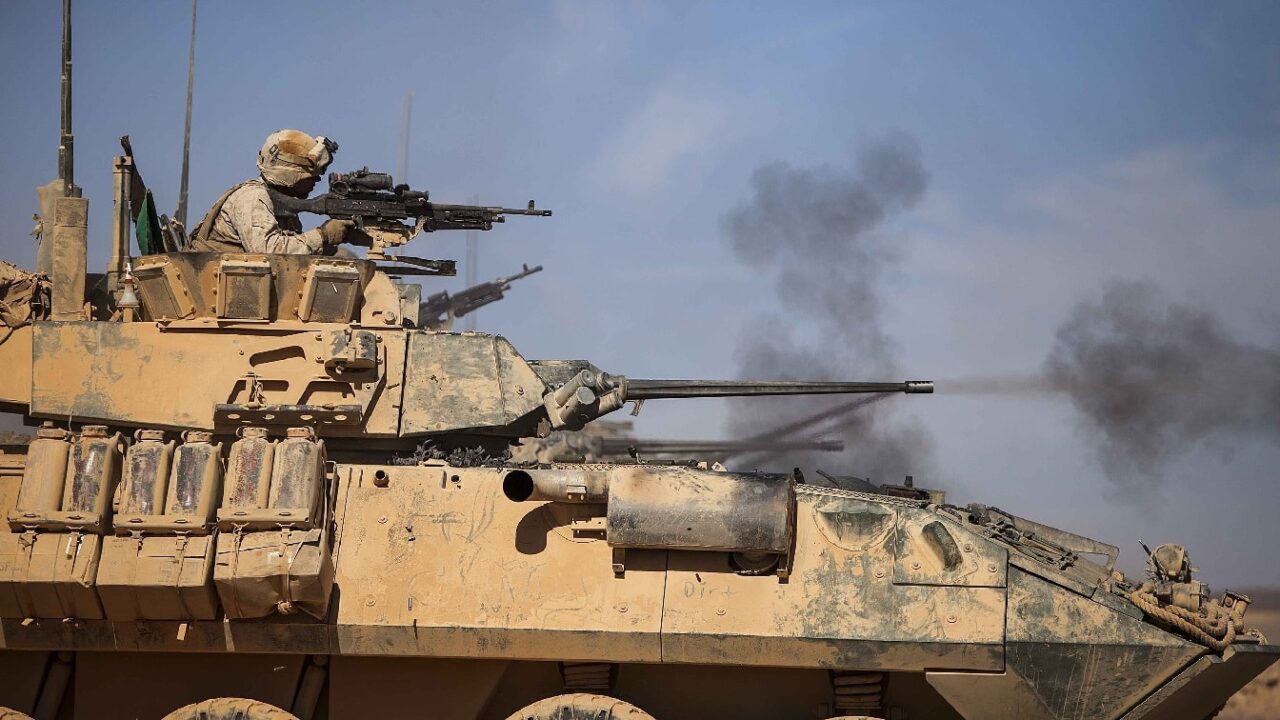The war in Ukraine is a human tragedy the likes of which have not been seen in Europe since World War II.
And it looks like more and more western and NATO weapons will make it to the battlefield to ensure Kyiv has the tools it needs to deter and defeat Russian aggression.
That means social media will be filled with what these weapons can do and how they will operate against Putin.
Social Media and the Ukraine War
A video shared on social media back in March showed how Ukrainian forces are utilizing an M113 armored personnel carrier (APC) to drive back the Russian invader.
The 50-second clip provided a view from the inside of the Cold War vehicle.
It was unclear where the video was recorded, or where this particular APC might be deployed – but despite its age, the M113 proves to still be a viable platform for the fighting in Ukraine.
To date, Ukraine has received approximately 200 M113 APCs from the United States, while twenty more were provided by Spain and eleven have come from Germany.
Australia has provided fourteen of its M113AS4 models, and Denmark has sent fifty-four M113G3DK variants.
An additional seventy had been supplied by Lithuania and fifteen from Portugal.
Another 100 M113 APCs are expected to be sent from U.S. arsenals.
Still in the Arsenals
The vast numbers available aren’t exactly surprising.
During the Cold War, armored personnel carriers saw widespread use throughout the world. The United States produced some 80,000 M113s across all variants – making it the most widely used armored fighting vehicle of all time.
The vehicle was first introduced in 1960 and was originally developed to carry airborne troops in transport aircraft such as the Lockheed C-130 Hercules.
The M113 was operated by a crew of two and could carry an additional eleven troops inside.
It was armed with a single .50 caliber (12.7mm) machine gun. The 13-ton tracked vehicle was protected by an aluminum hull that is still able to stand up to enemy small arms fire.
M113: Versatile Platform
The original version was powered by a 209 hp (156 kW) Chrysler 75M V8 gasoline engine, but that was later replaced with a 215hp (160 kW) 6V-53 Detroit Diesel engine, which provided better fuel economy, while it also reduced the fire hazard of a gasoline engine.
That model could reach a top road speed of 42mph (68 km/h), while it was also equipped with an additional gun shield and roof-mounted weapons.
???????????????? A US-donated M113 armored personnel carrier in service with #Ukraine. Inside view. Very cool cars with good performance pic.twitter.com/ytIuCLqmVj
— Feher_Junior (@Feher_Junior) March 8, 2023
There were some dozen variants of the M113 – with everything from a mortar carrier to a command vehicle to a medical evacuation platform. Many of these are now in Ukrainian service.
The M113 has seen use in dozens of conflicts around the globe – first seeing combat during the Vietnam War, where it proved reliable and easy to maintain. However, it was also determined during the Cold War that the APCs could be employed as infantry fighting vehicles (IFVs) rather than just carrying troops to the front lines.
Despite the lack of armament, the M-113 has been seen as a superior platform to the Soviet-designed BMP-1 or BMP-2 for transporting personnel to the combat zone and for evacuating the wounded.
The M113 has high cross-country ability and excellent maneuverability, and it is far better to make sharp turns than its Soviet-designed counterparts. It is also far easier to operate and maintain than the former Soviet vehicles.
Thus, the M113 may have a bit less armor and less firepower, but it is able to get out of a bad situation far easier, which for any APC is the key to survival.
Author Experience and Expertise:
A Senior Editor for 19FortyFive, Peter Suciu is a Michigan-based writer. He has contributed to more than four dozen magazines, newspapers, and websites with over 3,200 published pieces over a twenty-year career in journalism. He regularly writes about military hardware, firearms history, cybersecurity, politics, and international affairs. Peter is also a Contributing Writer for Forbes and Clearance Jobs. You can follow him on Twitter: @PeterSuciu.
From 19FortyFive
The 5 Best .22 LR Semiautomatic Pistols On Earth
Ukraine Footage Shows U.S. M982 ‘Excalibur’ Cut Through Russian Artillery
How To Sink A $3 Billion Dollar Submarine: Leave A Hatch Open

